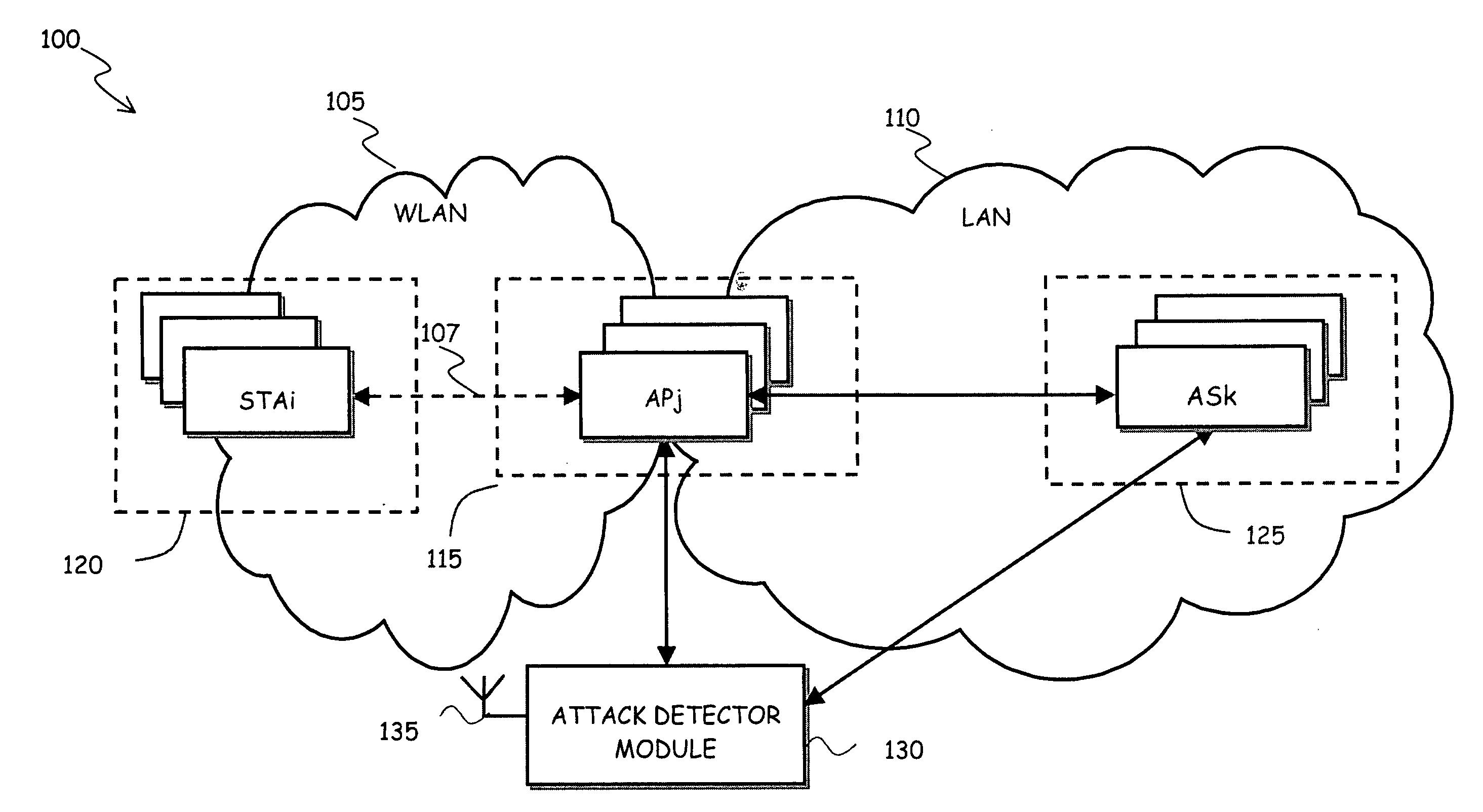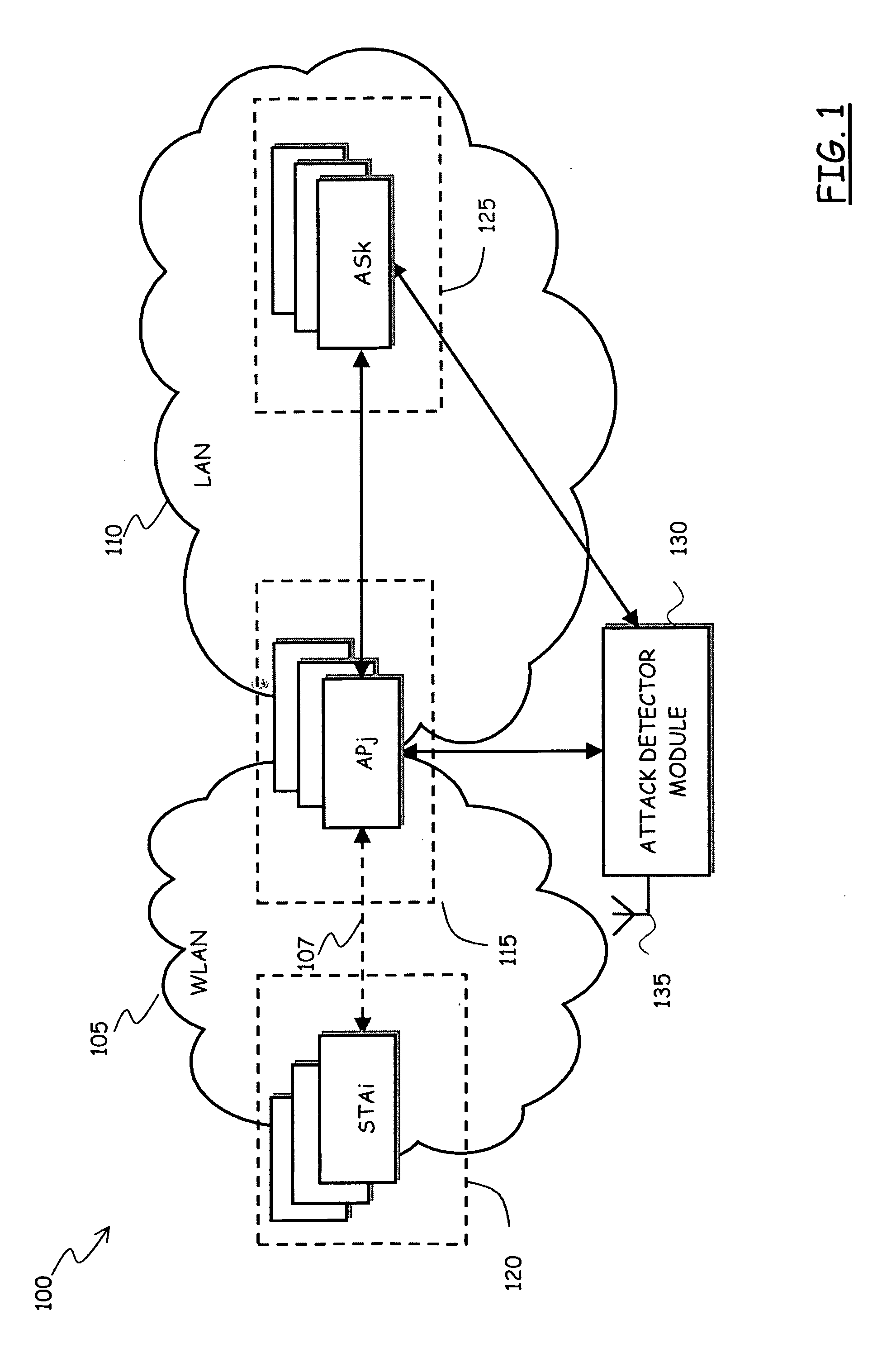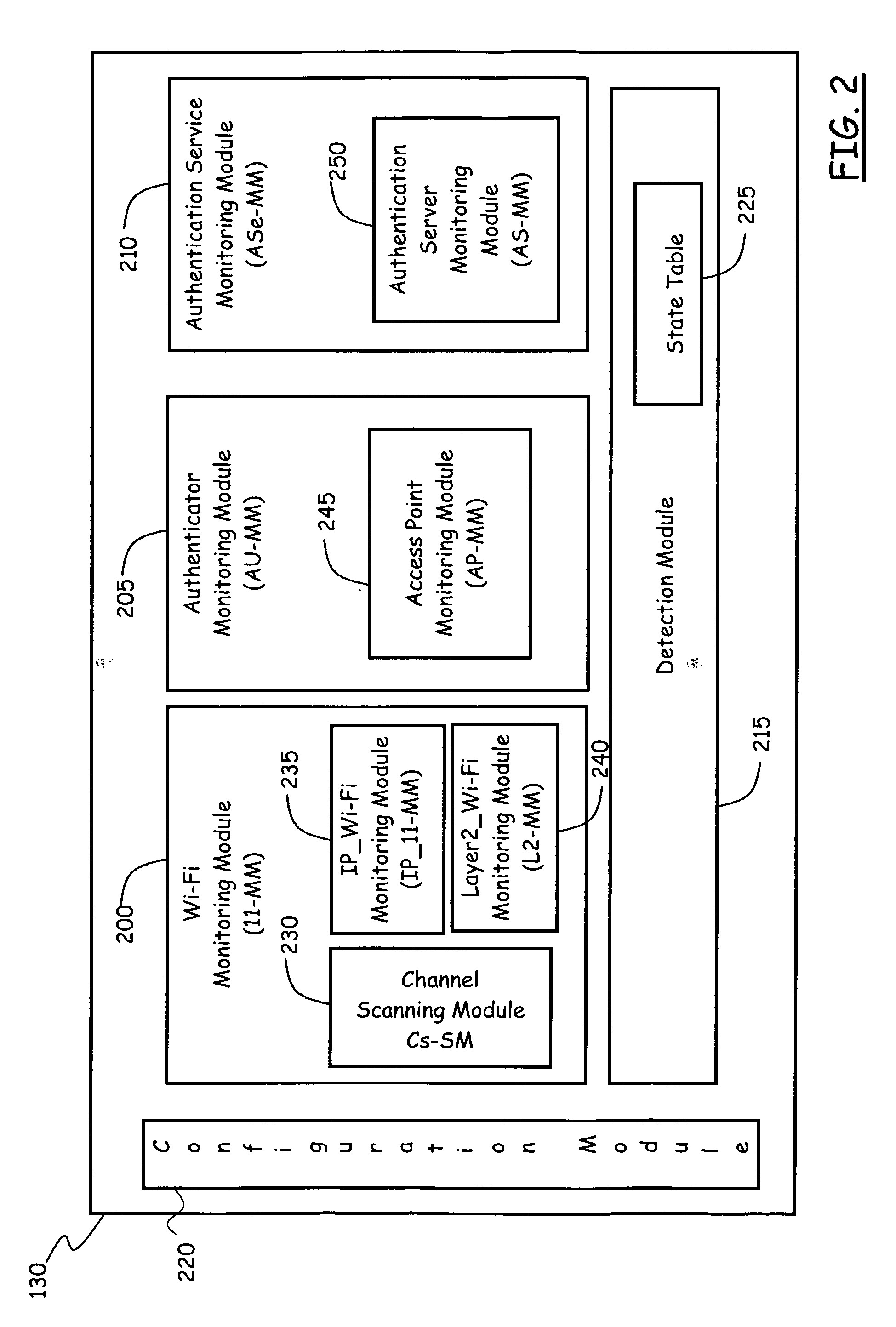Method and System for Detecting Attacks in Wireless Data Communications Networks
- Summary
- Abstract
- Description
- Claims
- Application Information
AI Technical Summary
Benefits of technology
Problems solved by technology
Method used
Image
Examples
example 1
Deauthentication Attack
[0131] In this first example, it is assumed that in the WLAN 105 no IEEE 802.11i is implemented. In absence of IEEE 802.11i implementation, the ASe-MM 210 of the ADM 130 is not used, and only the state table set of fields concerning the IEEE 802.11 parameters are filled (the IEEE 802.11i set of fields is left blank).
[0132] Let a generic STA, like the STA STAi, be considered, that is associated and authenticated to an AP, e.g. the AP APj.
[0133] An hypothetical WLAN attacker passively sniffs the “over-the-air” WLAN 105 traffic, looking for authenticated STAs, like the STA STAi.
[0134] Meanwhile, also the ADM 130 constantly scans the traffic “over-the-air”, to check all the frames traveling within the WLAN 105. At the same time, the state table 225 is constantly updated by the AP-MM 200; in particular, in the state table 225 there is an entry indicating the parameters of the STA STAi (MAC_CLi, channel, etc., as described in the foregoing).
[0135] When the atta...
example 2
LEAP Attack
[0138] In this second example, an IEEE 802.11 WLAN with IEEE 802.1X implementation is considered. Both the AP-MM 245 and the AS-MM 250 are used to constantly update the state table 225.
[0139] Let it be assumed that a generic STA, like the STA STAi, is associated with and authenticated to an AP, e.g. the AP APj, using IEEE 802.1X LEAP EAP-type.
[0140] In the state table 225 there is an entry in respect to the STA STAi indicating the IEEE 802.11 and IEEE 802.11i parameters (MAC-CLi, channel, ESSID, . . . ) of that STA, as described in the foregoing.
[0141] The ADM 130 scans the WLAN traffic “over-the-air” so as to check the frames inside the WLAN 105. At the same time, the AP-MM 245 and the AS-MM 250 keep the state table 225 constantly updated.
[0142] An hypothetical attacker passively sniffs the WLAN 105 looking for authenticated STAs, like the STA STAi. When the attacker finds an authenticated STA, like the STA STAi, the attacker sends one or more deauthentication frame...
PUM
 Login to View More
Login to View More Abstract
Description
Claims
Application Information
 Login to View More
Login to View More - R&D
- Intellectual Property
- Life Sciences
- Materials
- Tech Scout
- Unparalleled Data Quality
- Higher Quality Content
- 60% Fewer Hallucinations
Browse by: Latest US Patents, China's latest patents, Technical Efficacy Thesaurus, Application Domain, Technology Topic, Popular Technical Reports.
© 2025 PatSnap. All rights reserved.Legal|Privacy policy|Modern Slavery Act Transparency Statement|Sitemap|About US| Contact US: help@patsnap.com



